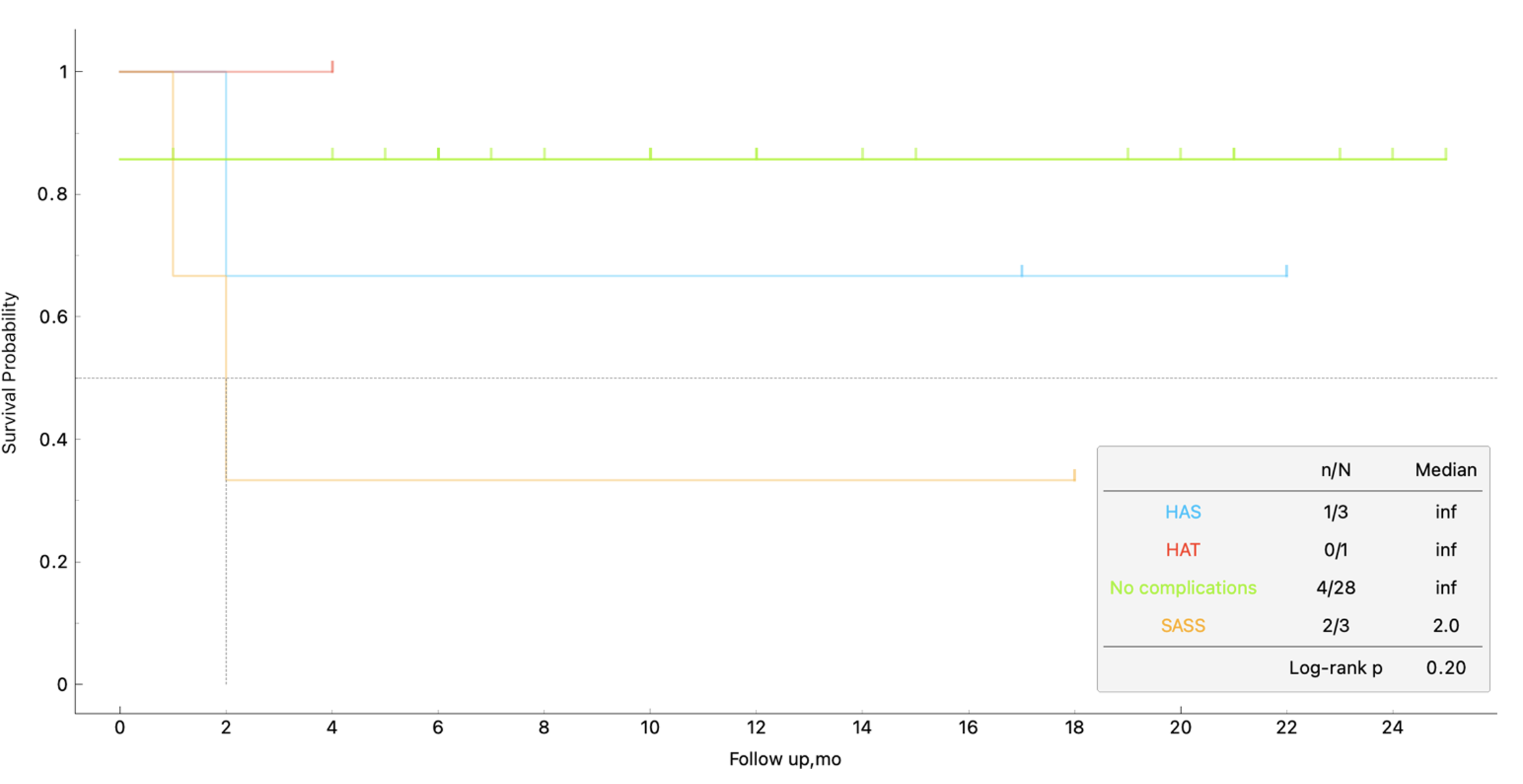Management of arterial complications following living donor liver transplant
Konstantin Semash1, Timur Dzhanbekov1.
1General Surgery Department, National Children's Medical Center, Tashkent, Uzbekistan
Introduction: Living donor liver transplant (LDLT) is an effective method of treatment for patients with different types of terminal liver diseases. Unfortunately, patients undergoing such a treatment sometimes are getting various complications. Vascular complications, especially those which are related to the hepatic artery, may lead to graft failure in the early post-operative period following LDLT if they are not managed urgently. Hepatic Artery Thrombosis (HAT) and Hepatic Artery Stenosis (HAS) may warrant revascularization or in certain cases, re-transplantation. On the other hand, Splenic Artery Steal Syndrome (SASS) represents a controversial cause for graft ischemia in liver transplant recipients and can have the same negative effect after performing LDLT.
Methods: 35 adult patients with varuous types of liver chirrosis underwent right lobe LDLT procedure since october 2021 to september 2023. We assessed vascular complications related to hepatic artery in these patients and long-term outcomes of LDLT.
Results: 7 of 35 patients (20%) had vascular complications related to hepatic artery. Of them, there was 1 (14.4%) case of HAT, 3 cases of HAS (42.8%) and 3 cases (42.8%) of SASS. In 6 cases we performed endovascular treatment. 1 patient requiered open surgery. The observation period was 25 months. During the observation period, 3 patients who had arterial complications died. Cases of death were not related to vascular coplications. Survival in group of patients without arterial complications was 86.2%.

Conclusion: Arterial complications can lead to severe graft dysfunction and even graft loss. Major tools for early detection and rapid restoration of arterial flow are DUS and endovascular intervention with good long-term results.
[1] living donor liver transplantation
[2] arterial complications
[3] endovascular management
[4] doppler ultrasound
